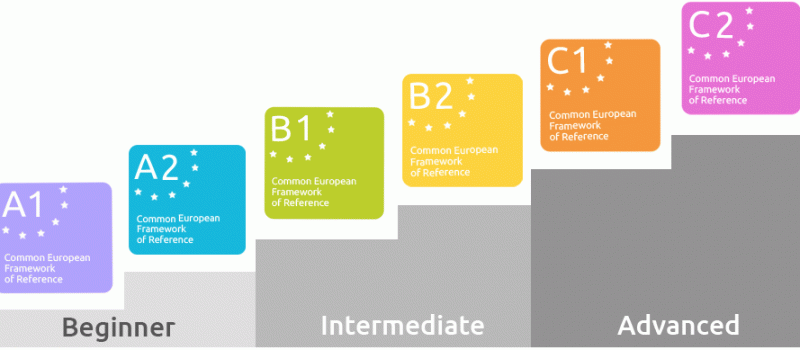
Common European Framework of Reference for Languages
The Common European Framework of Reference for Languages: Learning, Teaching, Assessment, abbreviated in English as CEFR or CEF or CEFRL (compared to the German abbreviations GeR or GeRS, the French abbreviation CECR, the Italian QCER, or the Spanish MCER), is a guideline used to describe achievements of learners of foreign languages across Europe and, increasingly, in other countries.
It was put together by the Council of Europe as the main part of the project “Language Learning for European Citizenship” between 1989 and 1996. Its main aim is to provide a method of learning, teaching and assessing which applies to all languages in Europe. In November 2001, a European Union Council Resolution recommended using the CEFR to set up systems of validation of language ability. The six reference levels are becoming widely accepted as the European standard for grading an individual’s language proficiency.
Level Group A (Basic User)
A1 – Breakthrough or beginner :
- Can understand and use familiar everyday expressions and very basic phrases aimed at the satisfaction of needs of a concrete type.
- Can introduce themselves and others and can ask and answer questions about personal details such as where he/she lives, people they know and things they have.
- Can interact in a simple way provided the other person talks slowly and clearly and is prepared to help.
A2 – Waystage or elementary :
- Can understand sentences and frequently used expressions related to areas of most immediate relevance (e.g. very basic personal and family information, shopping, local geography, employment).
- Can communicate in simple and routine tasks requiring a simple and direct exchange of information on familiar and routine matters.
- Can describe in simple terms aspects of their background, immediate environment and matters in areas of immediate need.
Level Group B (INDEPENDENT USER)
B1 – Threshold or intermediate :
- Can understand the main points of clear standard input on familiar matters regularly encountered in work, school, leisure, etc.
- Can deal with most situations likely to arise while travelling in an area where the language is spoken.
- Can produce simple connected text on topics that are familiar or of personal interest.
- Can describe experiences and events, dreams, hopes and ambitions and briefly give reasons and explanations for opinions and plans.
B2 – Vantage or upper intermediate :
- Can understand the main ideas of complex text on both concrete and abstract topics, including technical discussions in their field of specialization.
- Can interact with a degree of fluency and spontaneity that makes regular interaction with native speakers quite possible without strain for either party.
- Can produce clear, detailed text on a wide range of subjects and explain a viewpoint on a topical issue giving the advantages and disadvantages of various options.
Level Group C (PROFICENT USER)
C1 – Effective operational proficiency or advanced :
- Can understand a wide range of demanding, longer clauses, and recognize implicit meaning.
- Can express ideas fluently and spontaneously without much obvious searching for expressions.
- Can use language flexibly and effectively for social, academic and professional purposes.
- Can produce clear, well-structured, detailed text on complex subjects, showing controlled use of organizational patterns, connectors and cohesive devices.
C2 – Mastery or proficiency :
- Can understand with ease virtually everything heard or read.
- Can summarize information from different spoken and written sources, reconstructing arguments and accounts in a coherent presentation.
- Can express themselves spontaneously, very fluently and precisely, differentiating finer shades of meaning even in the most complex situations.
Contacta amb nosaltres per a més informació
